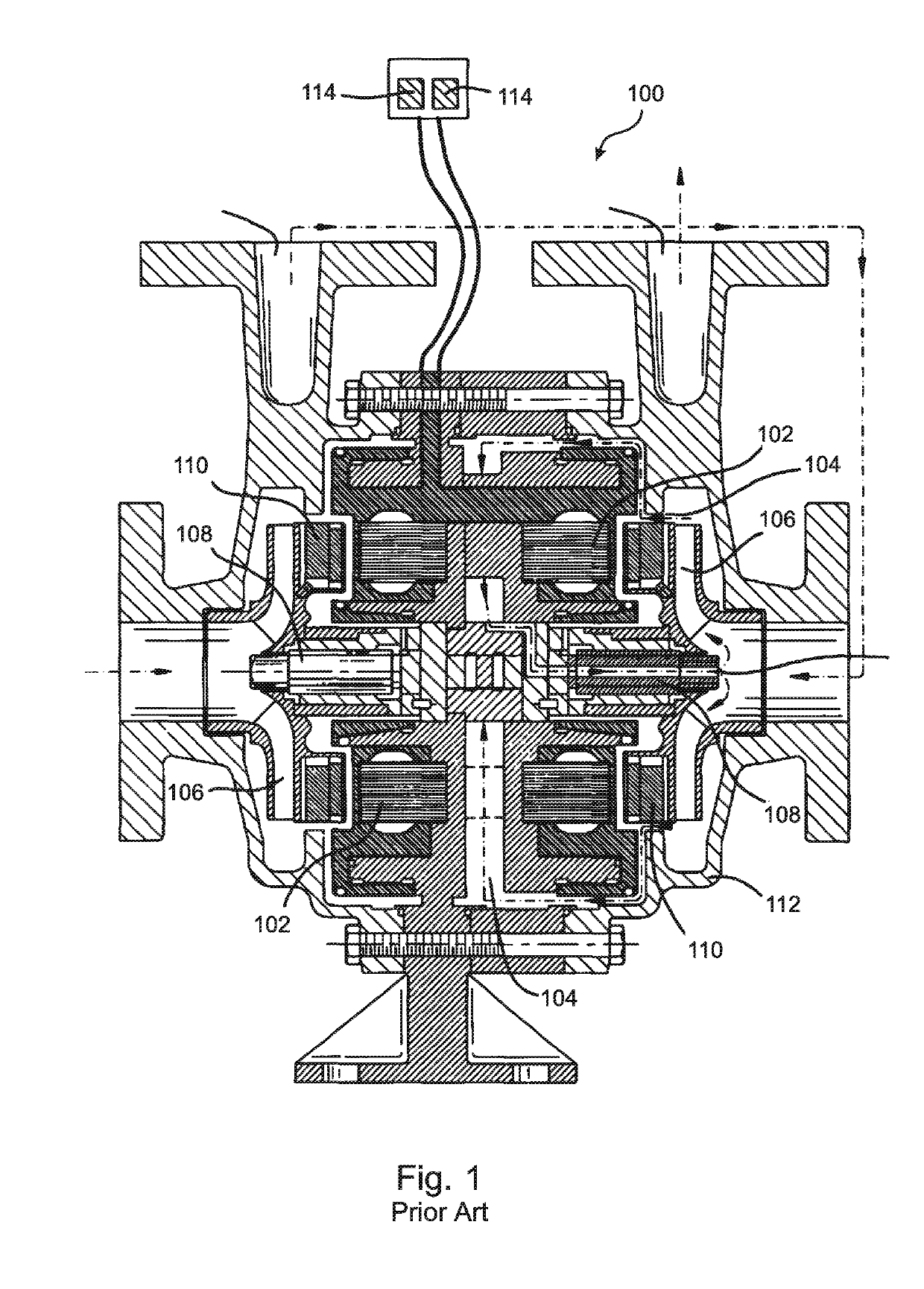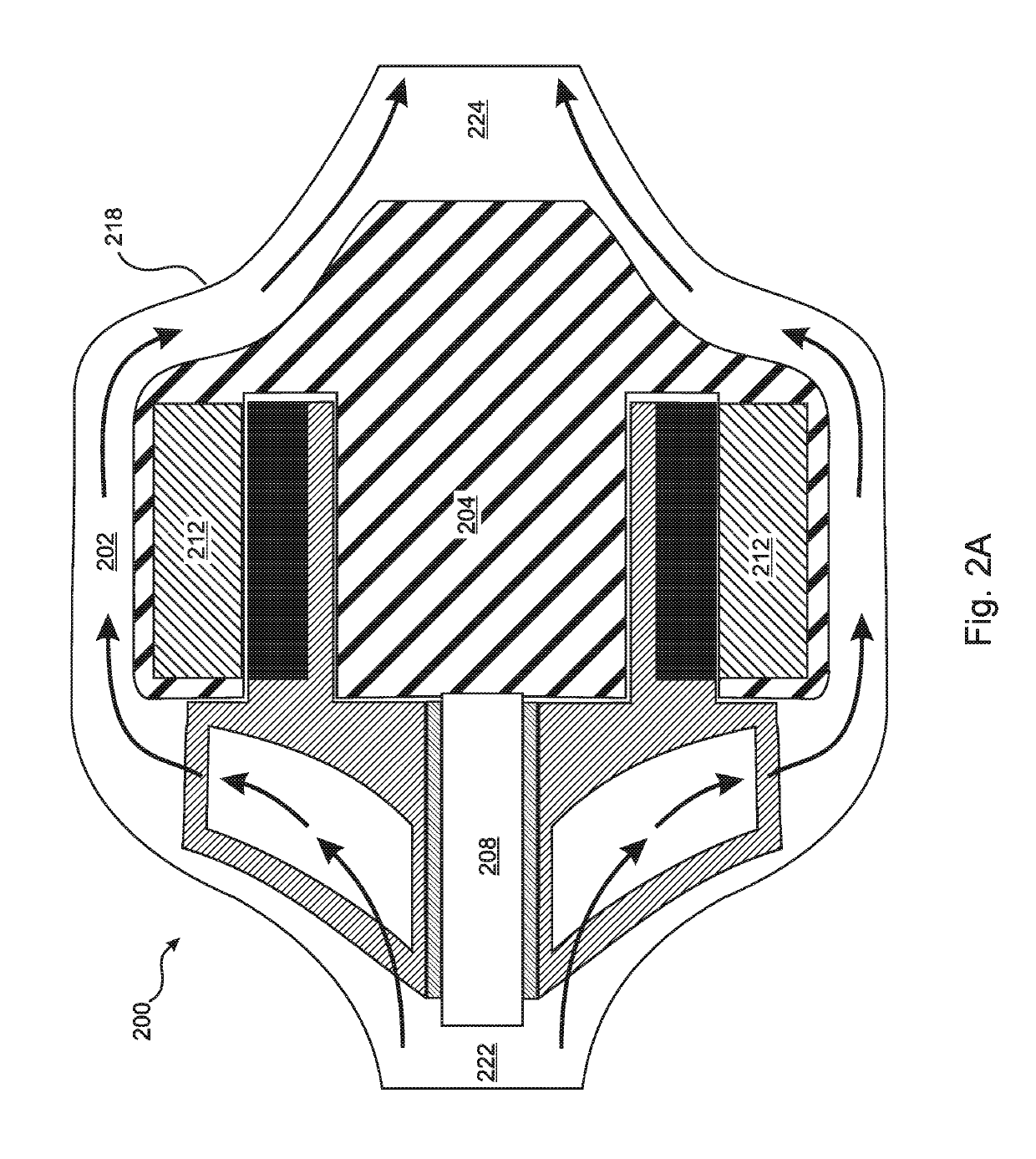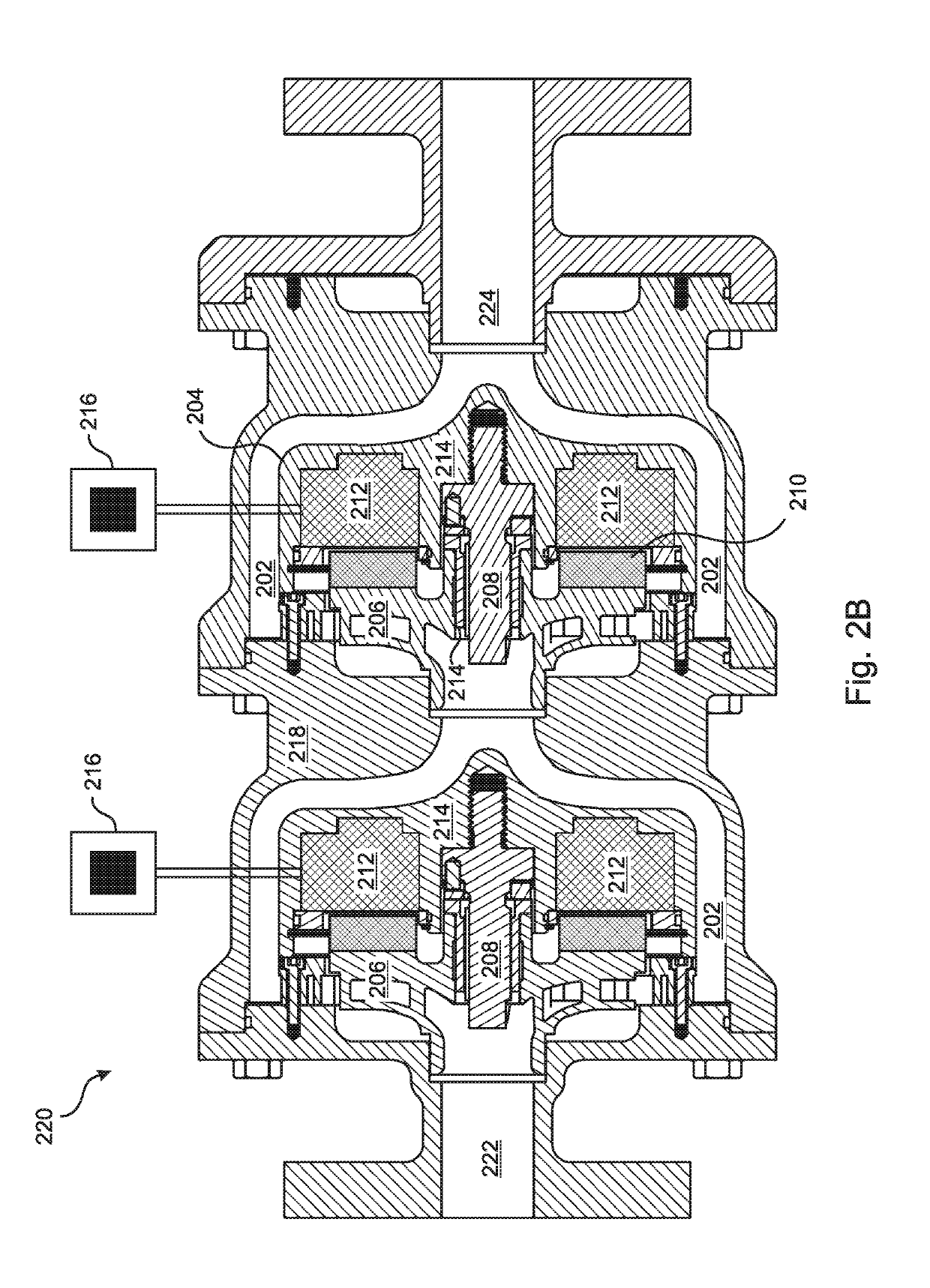Modular, multi-stage, integral sealed motor pump with integrally-cooled motors and independently controlled rotor speeds
a sealed, multi-stage technology, applied in the field of pumps, can solve problems such as rotordynamic problems, source of leakage and other failure modes, alignment problems between the driving motor and the mechanical seal,
- Summary
- Abstract
- Description
- Claims
- Application Information
AI Technical Summary
Benefits of technology
Problems solved by technology
Method used
Image
Examples
Embodiment Construction
[0049]The present invention is an integral motor pump or pump module that is configured to direct the discharge of process fluid from a rotor over the surface of the integral motor housing, thereby reducing or eliminating any need for a separate, dedicated motor cooling flow path. For example, in the embodiment of FIG. 2A, the discharge 202 from the rotor 206 is directed to pass over and around the motor housing 204 of the module, so that the motor 212 is directly cooled by the discharge of the impellor 206, and does not require a separate, dedicated cooling fluid path.
[0050]In embodiments, more than 80% of the fluid that enters the module inlet 222 is directed through the discharge path 202 to the module outlet 224, and at least 20% of the motor housing 204 is in direct contact with the discharge path 202. In embodiments, more than 90% of the fluid that enters the module 200 flows from the inlet 222 to the outlet 224 through the discharge path 202 and at least 50% of the motor hous...
PUM
 Login to View More
Login to View More Abstract
Description
Claims
Application Information
 Login to View More
Login to View More - R&D
- Intellectual Property
- Life Sciences
- Materials
- Tech Scout
- Unparalleled Data Quality
- Higher Quality Content
- 60% Fewer Hallucinations
Browse by: Latest US Patents, China's latest patents, Technical Efficacy Thesaurus, Application Domain, Technology Topic, Popular Technical Reports.
© 2025 PatSnap. All rights reserved.Legal|Privacy policy|Modern Slavery Act Transparency Statement|Sitemap|About US| Contact US: help@patsnap.com



